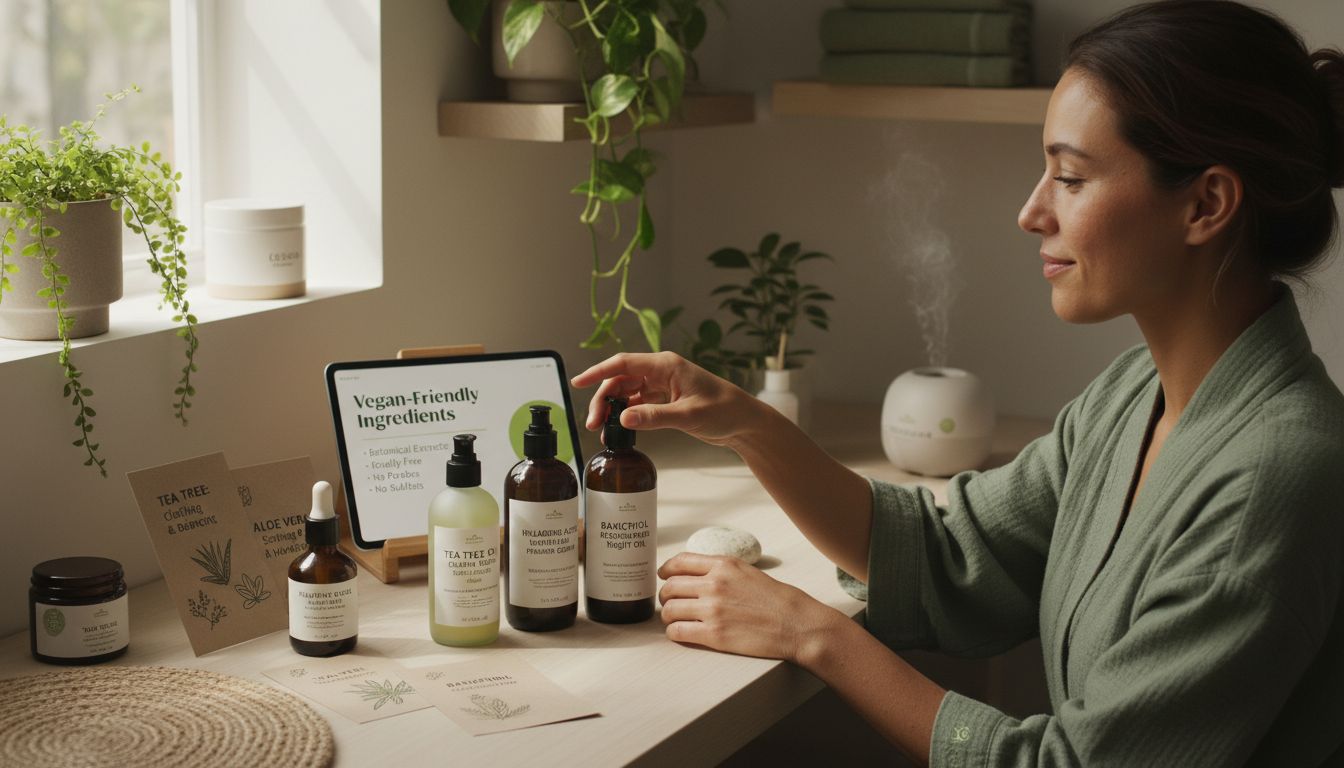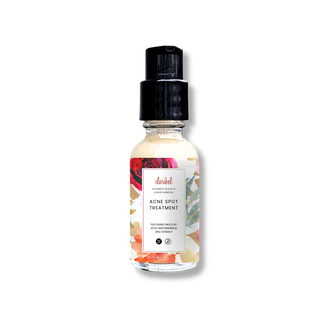Nearly 60 percent of american adults report confusion when choosing skincare products that actually match their needs. With so many options in stores and online, figuring out the right vegan routine requires more than following trends. Understanding your unique skin type and learning how to personalize each step can make all the difference. This guide offers straightforward steps to help you build a vegan skincare routine that truly works for your american lifestyle and skin concerns.
Table of Contents
- Step 1: Assess Your Skin Type And Concerns
- Step 2: Select Clean Vegan Ingredients That Address Your Needs
- Step 3: Customize Your Routine With Targeted Products
- Step 4: Test And Adjust Your Skincare For Best Results
Quick Summary
| Key Insight | Explanation |
|---|---|
| 1. Assess your unique skin type | Observe how your skin behaves daily to accurately identify its type and needs. |
| 2. Choose targeted vegan ingredients | Select plant-based ingredients that specifically address your skin concerns for effective results. |
| 3. Build a personalized skincare routine | Strategically layer products to ensure each addresses your specific skin type and goals. |
| 4. Test products one at a time | Introduce new skincare items individually, monitor their effects over several weeks. |
| 5. Adjust routine based on observations | Regularly evaluate your skin’s reactions and modify your skincare approach to optimize results. |
Step 1: Assess Your Skin Type and Concerns
Personalizing your vegan skincare journey starts with understanding your unique skin profile. According to Dr. Leslie Baumann, identifying your specific skin type is crucial for selecting the most effective natural skincare treatments that address your individual needs.
To determine your skin type, begin by observing how your skin behaves throughout the day. Carefully examine your skin texture, oil production, sensitivity, and any recurring concerns like dryness, acne, or uneven tone. Dr. Daniella Duke’s comprehensive skin type questionnaire recommends assessing several key characteristics: skin hydration levels, reaction to environmental factors, visible pore size, and typical skin responses.
A practical approach involves tracking your skin’s behavior for one week. Take notes on how your skin feels after cleansing, throughout different times of day, and under various environmental conditions. Are you experiencing midday shine? Occasional redness? Tight or flaky patches? These observations will help you narrow down your skin type and specific concerns such as oiliness, sensitivity, aging, or combination characteristics. Remember that vegan skincare is most effective when tailored precisely to your skin’s unique requirements.
After completing this assessment, you will be well-prepared to select targeted vegan skincare products that match your specific needs.
Step 2: Select Clean Vegan Ingredients That Address Your Needs
Now that you understand your unique skin type, it is time to choose vegan ingredients that specifically target your skin concerns. According to Journal of Drugs in Dermatology, understanding the nuanced labels of clean and vegan skincare is crucial for making informed product selections that truly benefit your skin.
The School of Natural Skincare recommends identifying plant-based ingredients that align with your specific skin needs. For oily skin, seek out ingredients like tea tree oil, witch hazel, and green tea extract which help balance sebum production. If you struggle with dryness, look for hydrating ingredients such as hyaluronic acid, aloe vera, and plant-derived squalane that provide deep moisture without animal-derived compounds.
Your ingredient selection should focus on clean vegan alternatives that offer targeted benefits.
 Individuals with sensitive skin might prioritize soothing ingredients like chamomile and calendula, while those concerned with aging can explore powerful antioxidants like bakuchiol (a plant-based retinol alternative) and vitamin C derived from fruits. When reviewing product labels, prioritize ingredients with clear origins and minimal processing. Learn more about selecting the perfect vegan skincare staples for your routine.
Individuals with sensitive skin might prioritize soothing ingredients like chamomile and calendula, while those concerned with aging can explore powerful antioxidants like bakuchiol (a plant-based retinol alternative) and vitamin C derived from fruits. When reviewing product labels, prioritize ingredients with clear origins and minimal processing. Learn more about selecting the perfect vegan skincare staples for your routine.

Step 3: Customize Your Routine With Targeted Products
Transforming your vegan skincare routine from generic to personalized requires strategic product selection that addresses your specific skin concerns. According to the Journal of Drugs in Dermatology, understanding product labels is crucial for creating a tailored skincare approach that matches your unique needs.
The School of Natural Skincare recommends building a routine that layers products strategically. Start with a gentle cleanser matched to your skin type, followed by a toner that balances your specific skin concerns. Next, apply serums with concentrated active ingredients targeting your primary skin goals such as hydration, brightening, or reducing inflammation. Choose a moisturizer that complements your skin type and provides the right level of hydration without causing congestion or dryness.
Creating a truly personalized routine means thinking beyond individual products to consider how they interact. Pay attention to ingredient compatibility and avoid overwhelming your skin with too many active components. A good rule of thumb is to introduce new products gradually one at a time and observe how your skin responds. For budget conscious skincare enthusiasts, explore budget friendly vegan skincare routine options that deliver exceptional results without compromising your ethical standards.
Step 4: Test and Adjust Your Skincare for Best Results
Customizing your vegan skincare routine is an ongoing journey of observation and refinement. Cutting edge research from ArXiv suggests innovative approaches to monitoring skin responses, including using smartphone technology to assess skin hydration and track changes in your skincare regimen.
To effectively test and adjust your routine, start by introducing new products one at a time and giving each at least two to four weeks to demonstrate results. Maintain a skincare journal documenting your observations such as texture changes, hydration levels, and any potential sensitivities. According to research from ArXiv, advanced simulation models can help predict how products might impact your skin, but nothing replaces personal observation and tracking.
Watch for key indicators of product effectiveness like improved skin texture, balanced hydration, reduced inflammation, and overall skin comfort. Be patient with the process and remember that your skin’s needs can change with seasons, stress levels, and hormonal cycles. For a comprehensive understanding of how to refine your approach, explore our step by step facial care guide for radiant skin.
Tailor Your Vegan Skincare Routine for Real Results
Struggling to find vegan skincare products that truly match your unique skin concerns can be frustrating. Many people face challenges like oily shine, dryness, or sensitive reactions that generic solutions just do not fix. This article highlights the importance of understanding your skin type and choosing clean vegan ingredients that work specifically for you. If you seek effective hydration or gentle care for sensitive areas, it is essential to pick products designed with your skin in mind.
Explore our thoughtfully curated collection for Oily skin or soothe your complexion with options from our Sensitive skin range.

Ready to stop guessing and start transforming your skincare routine with clean, vegan, and cruelty-free products that contain only the most sought after active ingredients and zero fillers? Everything ships free in the US. Visit Claribel Skincare now to find your perfect match and take confident steps toward radiant, personalized skin care.
Frequently Asked Questions
How do I assess my skin type for vegan skincare?
To assess your skin type, observe how your skin behaves daily. Track its texture, oil production, sensitivity, and any concerns like dryness or acne for at least one week. Document these observations to better identify your unique skin profile.
What are some clean vegan ingredients I should look for?
When selecting vegan skincare products, focus on ingredients that address your specific concerns. For oily skin, consider tea tree oil and witch hazel, while those with dryness should look for hyaluronic acid and aloe vera. Choose ingredients that are clean and plant-based to ensure they benefit your skin.
How can I customize my vegan skincare routine effectively?
To effectively customize your vegan skincare routine, layer products according to your skin type and concerns. Start with a gentle cleanser, followed by a toner, serums, and a moisturizer suited to your needs. Introduce products one at a time and monitor your skin’s reactions to optimize your routine.
What steps can I take to test and adjust my skincare routine?
Start by introducing one new product at a time and observe its effects for two to four weeks. Maintain a skincare journal to track changes in texture and hydration levels, which will help you refine your routine. This observation process enables you to identify what works best for your skin.
How do seasonal changes affect my vegan skincare needs?
Seasonal changes can affect skin hydration and sensitivity. For example, you may need more moisture in winter and lighter products in summer. Adjust your routine accordingly by switching to products that cater to your skin’s changing needs as the seasons shift.
What should I do if I experience sensitivity to a vegan product?
If you experience sensitivity, stop using the product immediately and consult your skincare journal for potential triggers. Consider patch testing new products before full application to minimize reactions. Gradually reintroduce products to identify what works for your skin without irritation.
Recommended
- How to Choose Vegan Skincare Naturally for Best Results
- Vegan Skincare Workflow for Healthy, Radiant Skin
- Budget Friendly Vegan Skincare: Step-by-Step Routine Guide
- 7 Types of Vegan Skincare Every Woman Should Know
- Τι είναι το personalized skincare: Κατανοώντας τη νέα τάση | B Woman
- Τι είναι vegan καλλυντικά; Κατανοώντας τη φυσική ομορφιά - PĒLION



